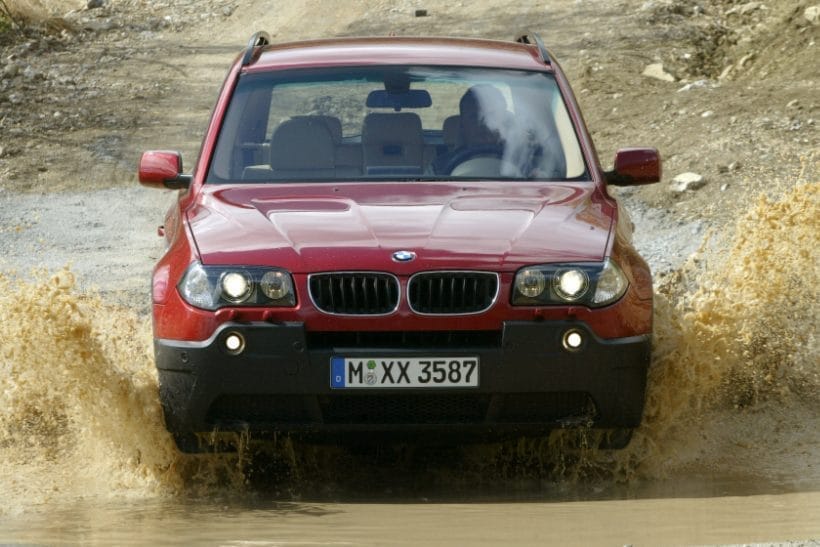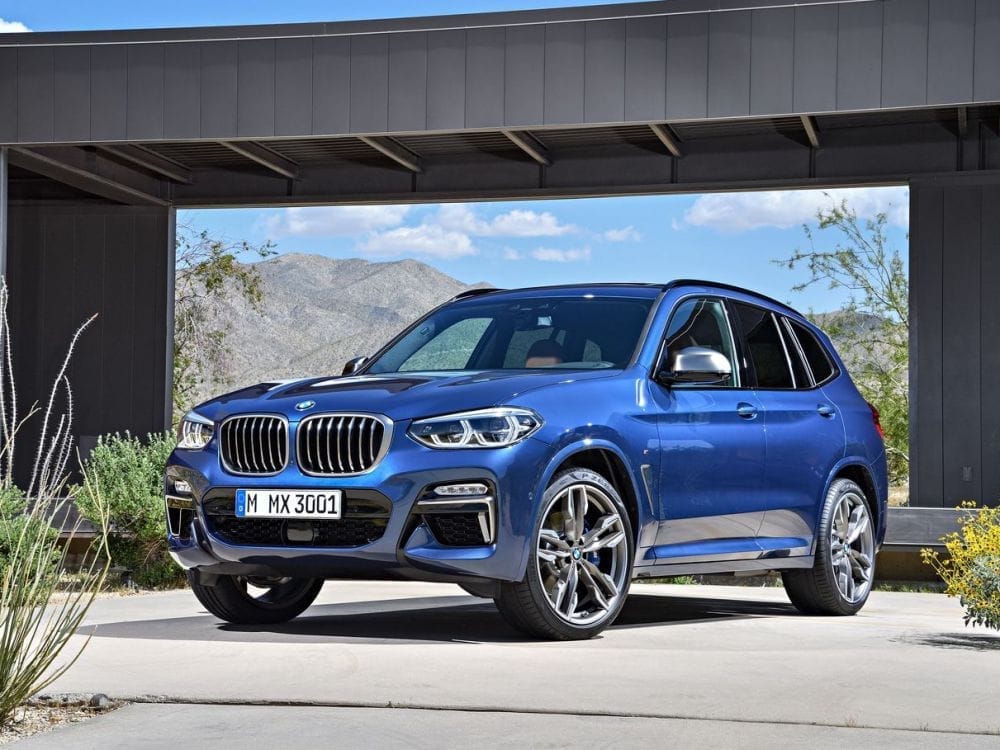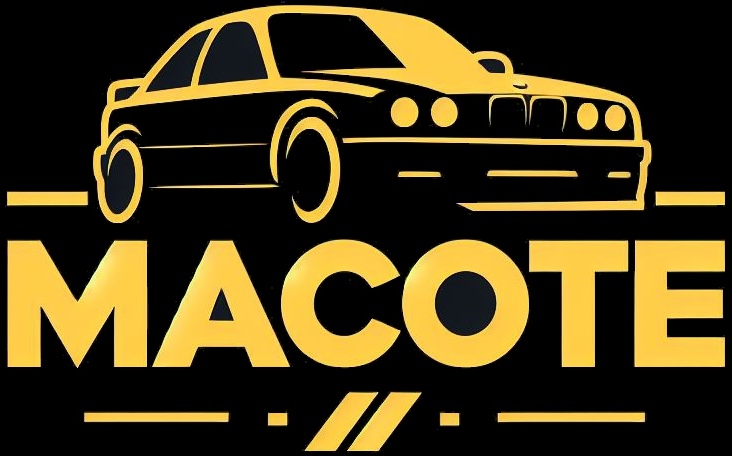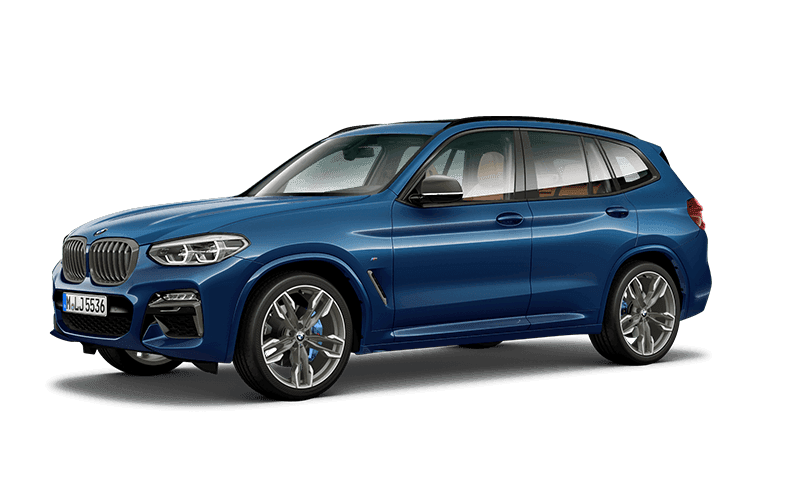Our accessories
Click on your model :
Exemplary Evolution Through the Generations
Depuis son apparition sur la scène automobile en 2003, la BMW X3 a tracé un parcours impressionnant, se forgeant une réputation solide en tant que SUV compact alliant performances dynamiques, luxe raffiné et innovations technologiques. Au fil des générations, chaque itération a marqué une étape significative dans l’évolution de ce modèle emblématique.
De la première génération, le X3 E83, qui a inauguré la série en 2003 avec des motorisations variées, à la deuxième génération, le X3 F25, qui a introduit des améliorations esthétiques et technologiques notables, jusqu’à la troisième génération, le X3 G01, symbole de l’alliance parfaite entre élégance, performance et technologie avancée. Chaque étape a représenté une réponse audacieuse de BMW aux attentes changeantes des conducteurs et aux évolutions du marché automobile.
Dans cet article, nous explorerons en détail chaque génération du BMW X3, en mettant en lumière les caractéristiques distinctives, les avancées technologiques, les évolutions esthétiques et les performances remarquables qui ont contribué à façonner le X3 en une référence incontestée dans le monde des SUV compacts. Préparez-vous à un voyage captivant à travers le temps, à la découverte de l’évolution continue et exemplaire de la BMW X3.
First-generation X3

A Revolutionary Introduction
Un an après son dévoilement sous forme de concept au salon de Detroit, la BMW X3 E83 commence sa production sur les chaînes d’assemblage de l’usine autrichienne de Magna Steyr.
Versatile engines at launch (2003)
Au lancement, la X3 E83 propose deux motorisations distinctes : un six-cylindres en ligne essence de 3 L et 231 ch (3.0i) et un six-cylindres Diesel de 3 L et 204 ch (3.0d). Cette offre s’élargit rapidement pour inclure un six-cylindres essence de 2,5 L et 192 ch (2.5i), ainsi qu’un quatre-cylindres Diesel de 2 L et 150 ch (2.0d). Un quatre-cylindres essence de 150 ch (2.0i) vient compléter la gamme en 2005.
2006 Restyling: More Power, More Sportiness
To maintain its pre-eminence in the compact SUV segment, BMW gave the X3 a slight restyling in 2006. The facelift gave the X3 a sportier look and more powerful engines. The 204 hp 3.0d is replaced by a more torquey six-cylinder, and new blocks, such as the 2.5si and 3.0si, are introduced with power outputs of 218 and 272 hp respectively.
Évolution des Motorisations et Nouvelle Appellation « xDrive »
En 2007, la plupart des anciennes motorisations sont supprimées, à l’exception des 2.0d et 2.0i. Les années 2008 et 2009 marquent l’arrivée de motorisations plus sobres avec l’abandon du 2.0d de 150 ch au profit d’un nouveau 2 L Diesel décliné en deux puissances, 143 et 177 ch. Toute la gamme adopte la nouvelle dénomination « xDrive » propre aux modèles quatre-roues motrices de la marque.
Système Révolutionnaire « xDrive » : Performance et Adaptabilité
La BMW X3 E83 introduit le système « xDrive », une transmission intégrale inédite sur ce segment. Ce système, en partenariat avec le DSC (Dynamic Stability Control), offre une motricité optimale en répartissant le couple entre les essieux avant et arrière en fonction des conditions d’adhérence. Cette technologie corrige les dérives liées au sous-virage ou au survirage, avec une répartition standard de 40/60 et une adaptabilité pouvant aller jusqu’à 50/50 voire 0/100 dans des conditions extrêmes.
Heritage and Recognition
Over the years, the BMW X3 E83 has consolidated its success thanks to its dynamic performance, versatility and technological innovations. It remains a popular compact SUV of its time, leaving a lasting legacy in the BMW line-up.
Second-generation X3

L’Évolution Affûtée
Après sept ans de succès de la BMW X3 E83, la deuxième génération, le X3 F25, voit le jour. Lancée en 2010, cette nouvelle itération se veut plus affûtée et mieux équipée pour rivaliser avec des concurrents tels que l’Audi Q5 et la Mercedes-Benz GLK. Bien que son esthétique reste proche de la génération précédente, le X3 millésime 2010 affiche des dimensions en hausse, accompagnées de motorisations plus puissantes.
Nouvelles Motorisations à l’Avant-Plan
Au lancement, le X3 F25 propose deux motorisations distinctes : une offre Diesel (xDrive20d) et une offre essence (xDrive35i). La gamme s’étoffe dès 2011 avec l’introduction du quatre-cylindres essence xDrive20i, ainsi que des six-cylindres en ligne à essence xDrive28i et Diesel xDrive30d et xDrive35d.
Extension de l’Offre et Évolution Technologique
En 2012, une déclinaison d’entrée de gamme, la sDrive18d à deux roues motrices, vient enrichir l’offre. La xDrive28i accueille un nouveau moteur de 2 litres turbo, succédant à l’ancien bloc de 3 L tout en conservant la même appellation.
L’année 2014 marque un tournant avec l’arrivée du Diesel 2 litres de nouvelle génération sous l’appellation sDrive18d. L’offre deux roues motrices s’élargit également à la motorisation d’entrée de gamme essence, désormais sDrive20i. Le restylage de 2014 apporte des changements esthétiques tels que de nouveaux projecteurs, un pare-chocs avant redessiné, des rétroviseurs au nouveau dessin intégrant les rappels de clignotants, et de nouveaux équipements technologiques. La partie arrière, cependant, reste inchangée.
Continuous Evolution
La X3 millésime 2016 apporte la possibilité d’ajouter de nouveaux équipements, tels que le volant M-Sport ou la recharge de téléphone par induction, jusqu’alors indisponibles.
X4: A luxurious bypass
The X4, a derivative of the X3 and competitor to the Porsche Macan, is distinguished by a few modifications. It is available exclusively with xDrive four-wheel drive, whereas the X3 offers sDrive two-wheel drive. The more luxurious X4 offers powerful engines, such as the twin-turbocharged in-line six-cylinder petrol engine developing 360 hp at 5800 rpm and 465 Nm.
The BMW X3 F25, with its ongoing developments and the addition of new engines, confirms BMW's position in the compact SUV market, offering drivers a combination of dynamic performance and technological refinement.
Third-generation X3

L’Ère de l’Élégance et de la Performance
La troisième génération du BMW X3, le X3 G01, a été dévoilée le 26 juin 2017 aux États-Unis, à l’usine de Spartanburg, en Caroline du Sud, le lieu de production de tous les SUV de la marque, à l’exception de la X1 et de la future X2. Présentée au grand public lors du salon de l’automobile de Francfort 2017, la commercialisation a débuté à l’automne de la même année.
New engines
The launch range included one petrol engine, the 360 hp M40i, and two diesel engines, the xDrive20d (190 hp) and xDrive30d (265 hp). Two further petrol engines were subsequently introduced: the xDrive20i with 184 hp and the xDrive30i with 252 hp.
Luxurious, customized finishes
Les finitions du X3 G01 se démarquent par leur qualité et leur luxe accrus par rapport à la génération précédente (F25). Les clients peuvent choisir entre les lignes xLine, Luxury et M Sport. De manière inédite, le programme BMW Individual est proposé en option, offrant des teintes de carrosseries exclusives pour l’extérieur et des cuirs de grande qualité avec un choix de couleurs uniques.
Lightweighting and Advanced Technology
Le poids a été réduit d’environ cinquante kilogrammes pour des motorisations et finitions équivalentes. Le X3 G01 intègre tout l’arsenal technologique des séries 5 et 7 de BMW. Son comportement routier est optimisé pour une expérience de conduite plus sportive, grâce à des liaisons au sol optimisées, une réduction des masses non suspendues et un peaufinage de la cinématique des essieux.
Powertrain evolution
Au salon international de l’automobile de Genève 2019, BMW présente les versions M et M Competition du X3 et du X4, offrant respectivement 480 ch et 510 ch. Ces variantes soulignent l’engagement continu de BMW envers la performance et l’innovation.
The BMW X3 G01 represents a successful marriage of elegance, performance and advanced technology, consolidating the brand's position in the competitive premium SUV market.



